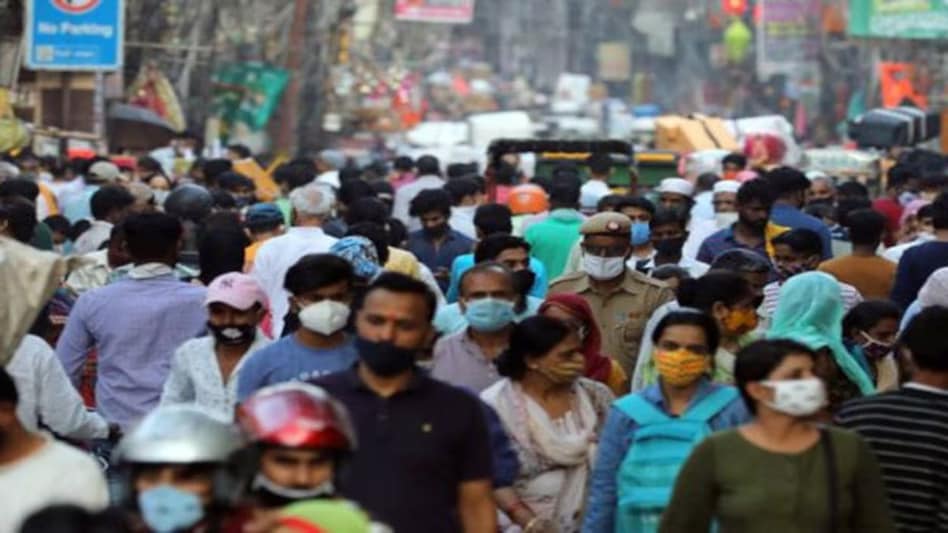 India's per capita income set to grow by 70% to $4,000 by 2030: Standard Chartered Bank report
India's per capita income set to grow by 70% to $4,000 by 2030: Standard Chartered Bank report 
 India's per capita income set to grow by 70% to $4,000 by 2030: Standard Chartered Bank report
India's per capita income set to grow by 70% to $4,000 by 2030: Standard Chartered Bank report In a recent research report, Standard Chartered Bank has said that it predicts India's per capita income is poised to experience significant growth, soaring by nearly 70 per cent to reach $4,000 by fiscal 2030, up from $2,450 in fiscal 2023.
This surge is expected to help the country achieve the status of a middle-income economy, boasting a GDP of $6 trillion. Notably, over half of this GDP will be fuelled by household consumption.
The report highlights an anticipated upward trajectory in India's per capita income and GDP over the years. From fiscal 2001 to fiscal 2021, per capita income has increased significantly, rising from $460 to $2,150. By fiscal 2023, it is projected to reach $2,450.
According to Standard Chartered Bank's projections, the foremost driver of growth will be external trade, which is estimated to nearly double to $2.1 trillion by 2030, up from $1.2 trillion in fiscal 2023 when the GDP stood at $3.5 trillion. Assuming a consistent 10 per cent annual growth in nominal GDP, the report anticipates an impressive surge in external trade.
The second major growth driver identified in the report is household consumption. It is forecasted to soar to $3.4 trillion by fiscal 2030, equivalent to the current size of the entire GDP, up from $2.1 trillion in fiscal 2023. Currently, household consumption constitutes a significant 57 per cent of the country's GDP.
Prime Minister Narendra Modi has expressed his commitment to ensure the economy reaches the $5 trillion mark in his next term if he wins elections and comes to power again. Achieving this milestone would position India as the third-largest economy globally, surpassing countries like Japan and Germany.
The report also envisions the rise of nine states to upper-middle-income status, with a per capita income of $4,000. However, the specific names of these states have not been disclosed.
Presently, Telangana leads the per capita income league table with Rs 2,75,443 in fiscal year 2023, followed closely by Karnataka with Rs 2,65,623, Tamil Nadu with Rs 2,41,131, Kerala with Rs 2,30,601, and Andhra Pradesh with Rs 2,07,771. Nonetheless, the report suggests that Gujarat is expected to take the lead in per capita income by fiscal 2030, followed by Maharashtra, Tamil Nadu, Karnataka, Haryana, Telangana, and Andhra Pradesh.
Among these states, Telangana, Delhi, Karnataka, Haryana, Gujarat, and Andhra Pradesh collectively contribute 20 per cent to the national GDP and are projected to achieve a per capita GDP of $6,000 by 2030. However, larger states like Uttar Pradesh and Bihar, comprising 25 per cent of the country's population, are expected to have a per capita income below $2,000 even in fiscal 2030, which would still be twice their fiscal 2020 levels.
The report emphasises that India's household consumption expenditure currently accounts for 57 per cent of its GDP. Even if the household expenditure share reduces by 1 per cent, the size of the consumer market would remain equivalent to the size of the entire economy at present.
Furthermore, the report highlighted that the higher share of the working-age population will continue to play a significant role in driving economic growth. The share of working-age population in the country is projected to increase from 64.2 per cent in 2020 to 64.8 per cent by the year 2040, eventually declining to 61.1 per cent in 2050. This demographic advantage is expected to contribute to labour efficiency, capital deployment, and sustained growth.
However, the report cautions that persistent negative growth in employment rate could hinder per capita real GDP growth. To ensure robust and sustained economic growth, the report identifies consistent reform progress, macro stability, a healthy financial sector, deleveraging of the corporate sector, and increased public capex as crucial growth enablers.
(Inputs from PTI)